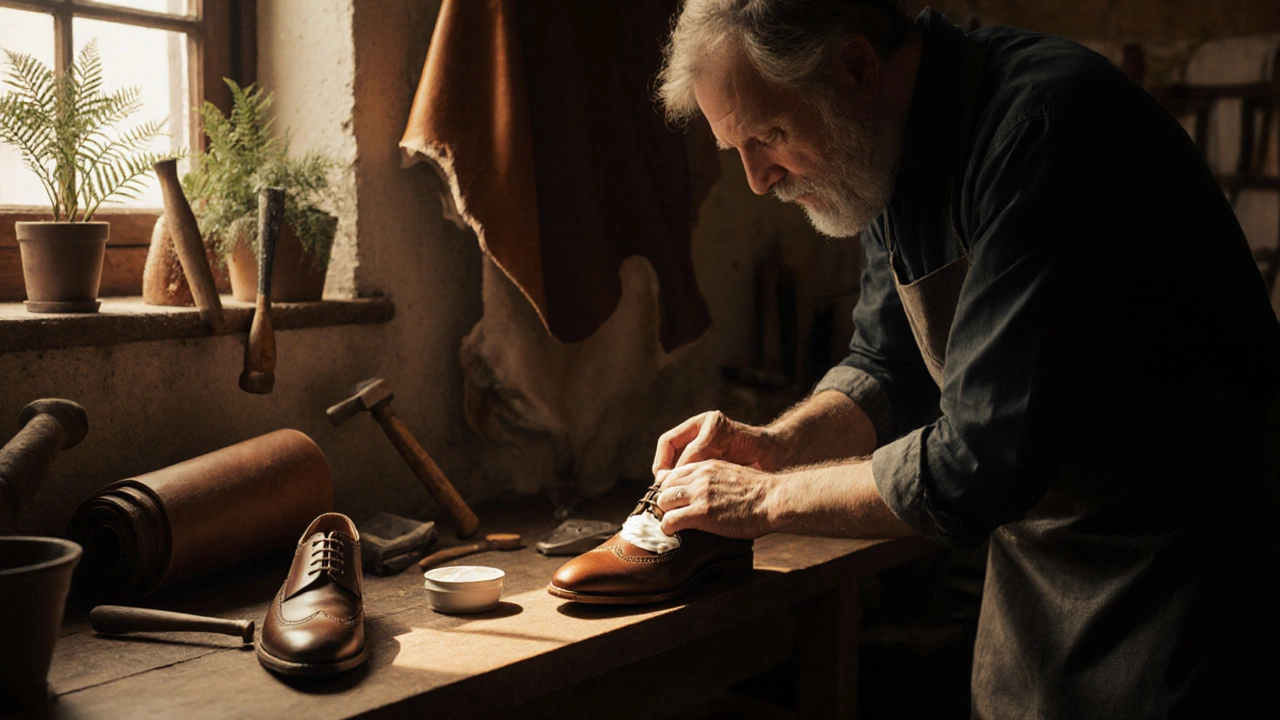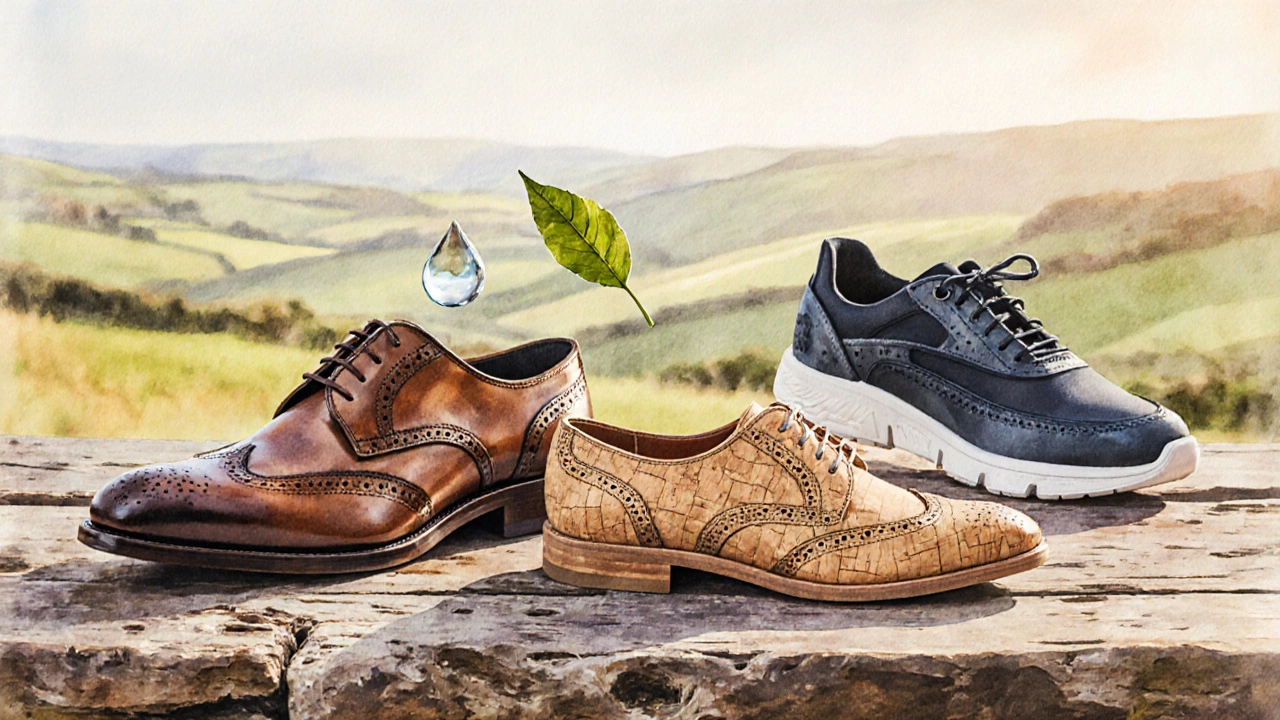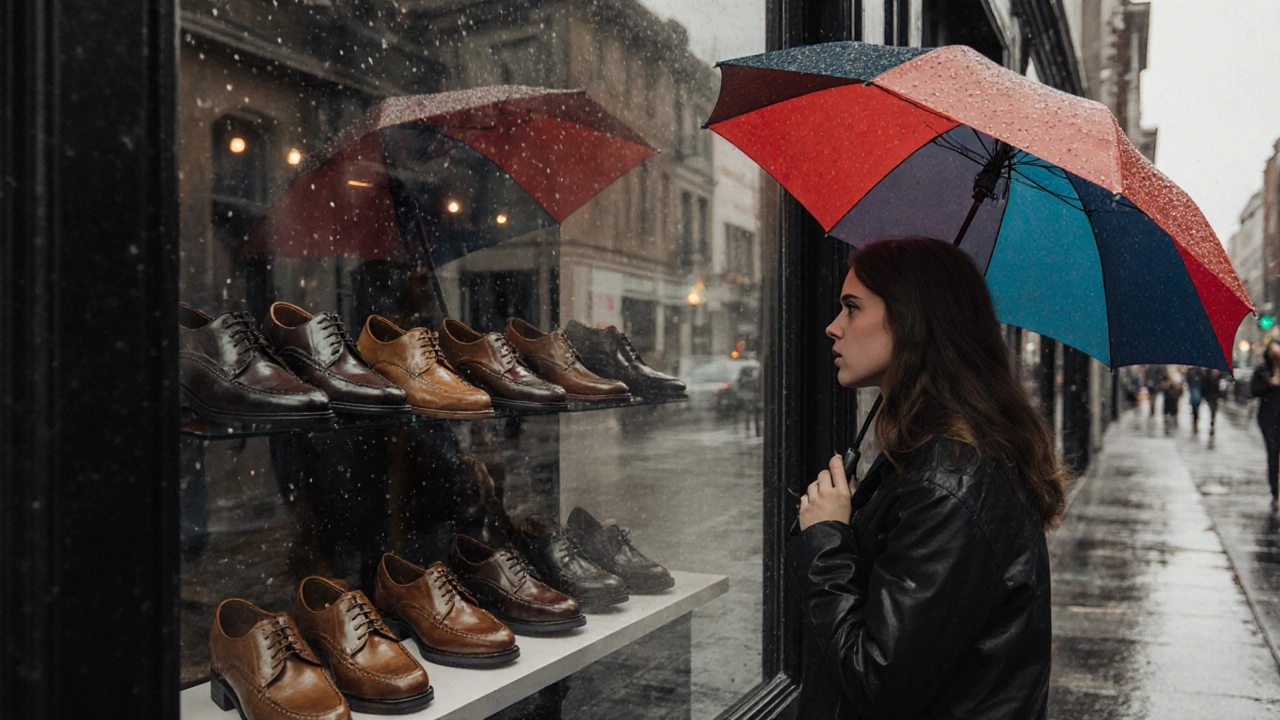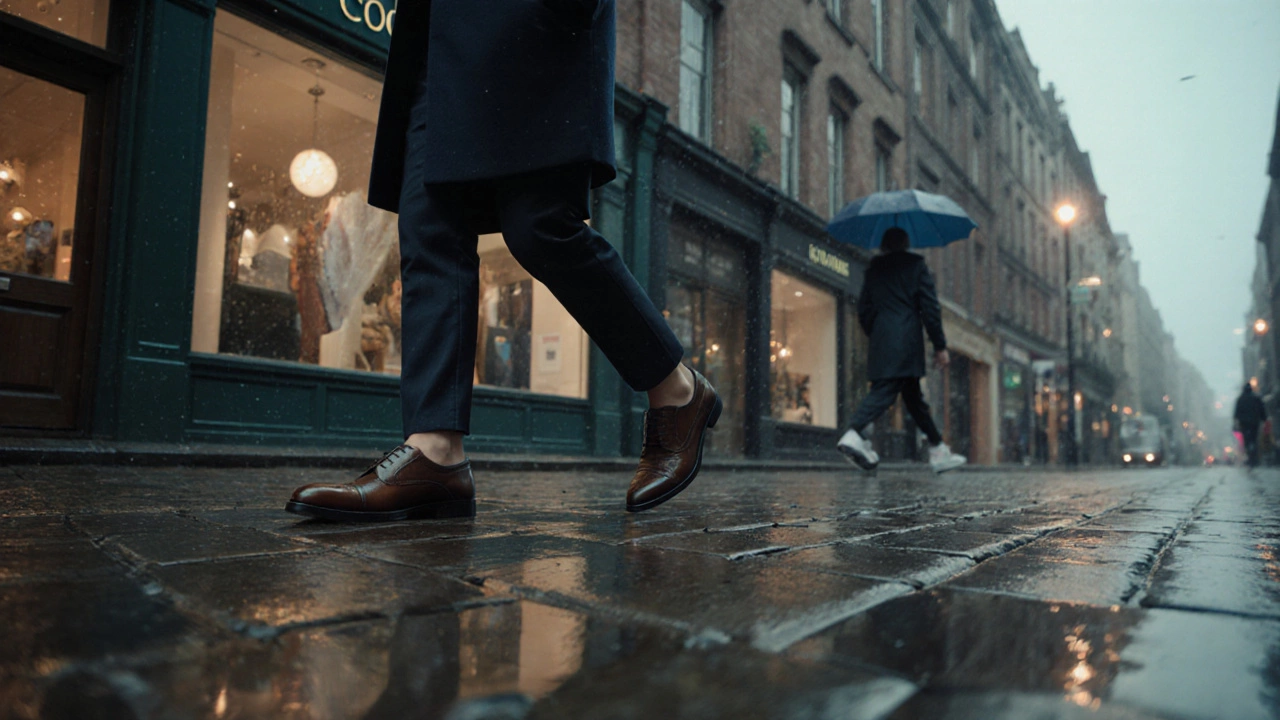Leather vs Synthetic Shoe Cost Calculator
Real Leather Shoes
Synthetic Shoes
Cost Comparison Results
When you’re strolling through Grafton Street on a rainy Dublin afternoon, the last thing you want is a pair of shoes that soak through or fall apart after a few weeks. That’s why many Irish shoppers wonder if real leather shoes are worth the extra spend. In this guide we’ll look at the true cost, the climate factor, local suppliers, and the sustainability angle, so you can decide whether to slip on genuine leather or opt for an alternative.
What Makes Real Leather Shoes Different?
Real leather shoes are footwear crafted from animal hide that has been tanned, dyed, and finished to create a durable, breathable material. The process preserves the natural grain, allowing the material to mould to your foot over time. Compared with synthetic uppers, genuine leather offers three key benefits: breathability, durability, and a patina that gets richer with wear.
Irish Weather and Leather Care
Ireland’s climate is famously mild but wet. An average of 140 rainy days a year means shoes are constantly exposed to moisture. Real leather, when properly conditioned, repels water better than cotton or canvas, but it still needs regular maintenance.
- Apply a waterproofing cream (e.g., Cobbler’s Choice) every 2‑3 months.
- Store shoes on a breathable shoe tree to retain shape and absorb humidity.
- Avoid leaving them in the boot tray after a downpour; let them air‑dry away from direct heat.
Local cobblers such as The Cobblers Dublin specialize in conditioning and resoling leather shoes, often offering a quick turnaround for busy professionals.
Cost vs. Longevity: The Irish Perspective
At first glance, a pair of real leather Oxfords from a high‑street retailer may cost €120‑€180, while a synthetic alternative can be as low as €50. However, the lifespan of quality leather often exceeds ten years with proper care, whereas synthetic shoes typically need replacement after 2‑3 years.
Let’s break down a simple cost‑per‑wear calculation for an Irish consumer who walks an average of 15,000 steps per month:
- Real leather shoes (€150) lasting 10 years → €150 / (120 months × 30 days) ≈ €0.04 per day.
- Synthetic shoes (€60) lasting 3 years → €60 / (36 months × 30 days) ≈ €0.06 per day.
When you factor in the added comfort and reduced need for frequent purchases, leather often wins the value game-especially for those who spend a lot of time on their feet, like Dublin’s tech‑sector commuters or Cork’s hospitality staff.

Local Irish Leather Production
While most leather imported into Ireland comes from the EU, a niche but growing sector of Irish tanneries is reviving traditional methods. Companies such as Cork Leather Co. source hides from local farms, using vegetable tanning that reduces chemical waste. Buying from them supports Irish agriculture and offers a product that ages uniquely in Irish conditions.
Many boutique shoe makers in Galway and Limerick incorporate this locally‑tanned leather into handcrafted brogues, giving you a piece of Irish heritage with every step.
Alternatives: Synthetic, Cork, and Eco‑Leather
If you’re hesitant about animal leather, consider these options that still suit Ireland’s moist climate:
| Material | Water Resistance | Breathability | Typical Price (€) | Environmental Impact |
|---|---|---|---|---|
| Real Leather | Good (when treated) | High | 120‑200 | Medium - depends on sourcing |
| Synthetic (PU) | Fair | Low | 40‑80 | High - petroleum based |
| Cork Leather | Excellent | Medium | 90‑150 | Low - renewable, Irish |
Cork leather, made from the bark of the Irish cork oak, is especially appealing for vegans or anyone wanting a home‑grown material. It’s naturally water‑repellent, but it doesn’t develop the same patina as animal leather.
How to Spot Quality Real Leather in Irish Stores
Whether you shop at Penneys for budget options or at Brown Thomas for high‑end selections, look for these markers:
- Full‑grain finish: The top layer of hide is untouched, showing natural markings.
- Stitching: Double‑stitched seams indicate durability.
- Edge treatment: Quality shoes have sealed edges, not raw leather that can split.
- Country of origin label: EU‑regulated tanneries like Berdorf (Germany) or Irish‑made Cork Leather Co. are good signs.

Environmental Considerations: Is Real Leather Sustainable?
The sustainability debate hinges on sourcing. Traditional chrome tanning releases harmful chemicals, but EU legislation (REACH) has tightened limits, and many Irish tanneries now use vegetable tanning, which reduces pollutants.
Additionally, a long‑lasting leather shoe cuts down on waste compared to two or three cheap synthetic pairs over the same period. If you buy a pair that lasts a decade, the carbon footprint per wear year drops dramatically.
To maximize eco‑friendliness, pair real leather shoes with a shoe care kit that includes natural conditioners and avoid disposable shoe polish packets.
Where to Buy Real Leather Shoes in Ireland
Here’s a quick roundup of reputable places across the country:
- Dublin: The Cobblers Dublin - offers both ready‑made shoes and custom fitting.
- Cork: Blarney Shoe Co. - specializes in cork‑leather hybrids.
- Galway: Claddagh Footwear - hand‑stitched brogues using Irish‑tanned leather.
- Limerick: Limerick Leather Works - traditional craftsmanship with modern designs.
Many of these shops also offer repair services, extending the life of your investment.

Quick Decision Checklist
- Do you live in an area with frequent rain? Real leather + waterproofing is ideal.
- Is long‑term value a priority? Leather usually outlasts synthetics.
- Do you follow a vegan lifestyle? Consider cork or high‑quality synthetic alternatives.
- Want to support Irish industry? Choose Irish‑tanned leather or cork options.
- Are you comfortable with regular shoe care? Leather needs conditioning, but the result is worth it.
Frequently Asked Questions
Frequently Asked Questions
Will real leather shoes last in Ireland’s wet climate?
Yes, provided you treat them with a waterproofing cream and store them properly. Irish cobblers can re‑condition them annually to keep them in shape.
Are there Irish-made leather shoes?
Indeed. Brands like Claddagh Footwear, Cork Leather Co., and Limerick Leather Works produce shoes using locally sourced hides and traditional vegetable tanning.
How does cork leather compare to real leather?
Cork leather is water‑resistant, lighter, and fully renewable, but it doesn’t develop the same patina as animal leather. It’s a great vegan alternative that works well in Irish rain.
What maintenance routine should I follow?
Clean off dirt weekly, apply a thin layer of leather conditioner every 2‑3 months, use a waterproofing spray before heavy rain, and keep a shoe tree in the closet.
Is buying real leather shoes a sustainable choice?
When sourced from responsible tanneries and used for many years, real leather can have a lower lifetime carbon footprint than disposable synthetics. Look for EU‑certified or Irish‑tanned options.
Bottom line: In Ireland’s damp climate, real leather shoes, when cared for, provide durability, comfort, and a chance to support local craftsmanship. Weigh the upfront price against the long‑term value, consider your ethical stance, and you’ll make a decision that fits both your feet and your conscience.
